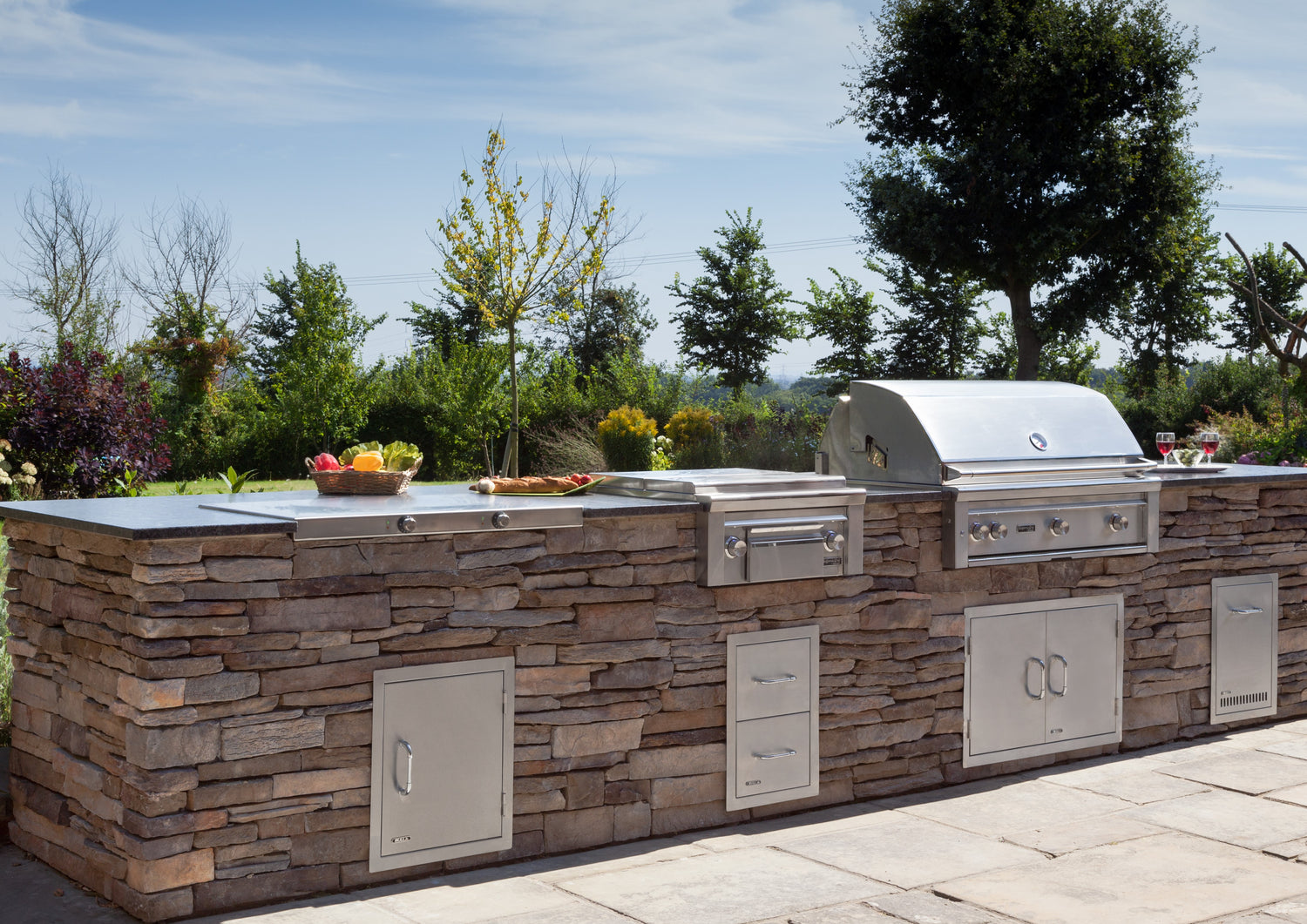Once you've had a barbequed bird, you'll never go back to a conventional oven!
Why BBQ a turkey?
There are two key reasons to BBQ your turkey this year:
1) It tastes better!
- Barbequing gives a light, delicious and aromatic smoky flavour and the skin becomes beautiful and bronzed.
- Cooking outside helps ensure a more moist and succulent texture to the meat as it cooks in far higher humidity than an internal oven, which invariable dries out the bird.
2) It's a practical solution
- It's a little quicker on a BBQ and avoids those lingering cooking smells which can permeate throughout the house
- It frees up space in the oven to cook the potatoes, keep the plates warm, or the other multitude of things that you need the oven for.

How do I BBQ my turkey?
1) Preparation
- If it's frozen, carefully defrost it. If it's from a supermarket, follow the instructions. If it's a large bird it can take a couple of days to defrost, so ensure you leave plenty of time. Remove from the fridge for an hour before cooking.
- If there are giblets in the bird, remove them for making the gravy.
- Dry the turkey inside and out with paper towel - this will ensure the skin crisps up nicely.
2) Brining
This is optional but well worth the effort!
- Take a big lidded pot or better still a plastic picnic cooler box. Brining is like a marinade, as it helps keep the food moist and tender. Brining or salting is a way of increasing the moisture holding capacity of meat, resulting in a moister bird when cooked. Salt changes the structure of the muscle tissue in the meat which allows it to swell and absorb water and flavourings which results in a tasty, tender bird.
- Make around a 10% brine solution - that is about 100g of salt for every litre of water. Dissolve the salt with half as much soft brown sugar in boiling water. Make enough to cover the turkey in the selected container.
- Throw in a handful of peppercorns and if you're a bit of a foodie, some liquid stock too.
- Add a load of ice to get the temperature down. If the turkey keeps bobbing up above the water line, weigh it down using a weight wrapped in cling film that will not react to brine.
- Now store in a fridge or a cold place (like a garage), for around 12-16 hours for a small bird or 16-24 hours for a larger one. If it is not stored in the fridge, top it up with ice occasionally.
- When the time is up, rinse the turkey twice and pat dry with paper towels.
3) Getting the BBQ ready for cooking
- Soak a small handfull of woodchips in water for 30 minutes.
- For charcoal BBQs, take about 12 briquettes each side of the grate and start the fire in your usual way. A "chimney starter" is ideal for this. Briquettes are best as they burn at a more even temperature and last longer, but quality charcoal is fine too. Open all the vents fully and get the BBQ moderately hot. For now, leave the lid off.
- For a gas BBQ, put the side burners on and the BBQ with the lid closed.
- Put a drip tray in the middle between the coals or over the unit gas burners. Add a little water or even cider to the pan.
4) Cooking the Turkey
- Take the wood chips and shake off any excess water, then add to the coals of a charcoal BBQ or put in a smoker box (or on some double thickness aluminium foil) on a gas BBQ.
-
When the BBQ is hot (about 250ºC 480ºF) place the turkey on its side in the centre of the grill
- After 15-20 minutes turn onto its other side, always keeping the lid down.
- Check again in 15 minutes then turn to brown the bottom of the bird
- Turn again onto the breast side and leave for 15 minutes. This helps "self-baste" the bird.
- When the skin is becoming a nice brown colour it is time to close the top and bottom vents to about a quarter open, or turn down the gas burners to "slow"
- You want the BBQ to cool down to about 160ºC - 175ºC (325ºF - 350ºF)
- Continue turning the turkey over about every 30 minutes of so if you feel it is browning too much. You can also put tin foil over the breast if it is becoming too brown.
5) When will the turkey be done?
- Cooking time is not an exact science, but as a guide allow 40 minutes per kilo, plus 20 minutes. Before the theoretical completion time, check the bird with a decent thermometer. Insert the probe into the thickest part of the flesh avoiding contact with the bone. When it reaches 70ºC (160ºF) it is done. To reassure yourself, or if you do not have a thermometer, cut into the centre of the bird - it will be done if the juices run clear and there is no pink by the bone.
- When cooked, set the turkey aside, cover with foil and rest for at least 15 minutes. This will ensure that it reaches the ideal temperature and all of the juices will redistribute for a juicy bird.
Some final tips for the perfect turkey dinner
- Drain off most of the fat then use the juices from the drip tray to make the gravy
- Cook the turkey separately in the oven. Cooking it inside the bird will potentially leave it half raw or, if cooked, result in the white meat being too dry
- If it rains, put the garden umbrella over you and the BBQ, or BBQ under an open "up and over" garage door. Never BBQ inside a garage or other enclosed space
- To aid carving, cut out the wishbone first
When you taste the bird, you will know why the extra effort is worth it!
You can find the perfect BBQ on which to cook your turkey in the wide range of BBQs available at Kitchen in the Garden.


